Kirby Larson's Blog, page 30
August 9, 2013
Friend Friday
I am so pleased and honored to host Barbara Kerley today. I am crazy about her biographic picture books (What To Do About Alice?, Those Rebels, John and Tom and more), which I think are absolutely engaging as well as educational. It's a treat today to shine the spotlight on a book that required quite a different kind of research! Take it away, Barb.

I consider myself to lead a wild and crazy…reading life. I read all sorts of books and the characters in those books go all sorts of places and get into all sorts of trouble.
But in my reallife, I’m a bit more timid. Luckily, I have a husband who is adventurous. Sometimes, he even manages to pull me along for the ride.
When we lived on Guam for two years, it was my husband who first suggested we learn how to SCUBA dive. Here we are, underwater. (You will note that my husband is making ‘bunny ears’ behind my head.)

On a trip to Florida, it was my husband who thought it would be fun to go canoeing in a marsh full of alligators. Alligators. In the water. On the banks. Dozens and dozens of alligators. (I don’t have a photo of that, though it is indelibly etched in my memory; I was too busy gripping the paddle firmly and trying to paddle away from—the alligators.)
Even now, as we’ve entered middle-age, it is my husband who leads the way (and never seems to get lost) as we hike the trails of northwest Oregon.
He has definitely led me on adventures that I certainly never would have attempted on my own. And I’m grateful for it.
SCUBA diving opened up a whole new world for me (who knew there were so very, very many kinds of animals underwater?) It was thrilling to see alligators up close (and we didn’t get eaten—an added plus). And hiking up through the trees to the summit of a hill and seeing the vista below continues to be deeply satisfying.
I appreciate my husband’s sense of adventure, happy he has invited me along and grateful he has helped me become a little bit of an explorer myself.
And my latest book is all about adventures and exploration.
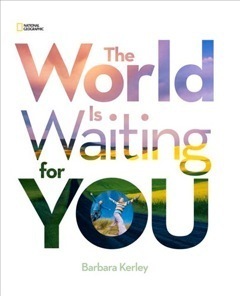
The World Is Waiting For You is an invitation for kids and their families to get out and explore, to follow their curiosity—and see where it takes them.
Somewhere amazing, I’m betting.
Barb, we are all very thankful you could out-paddle those alligators. Thank you for this reminder that it's in stepping outside our comfort zones that we often find the stories we're meant to tell.

I consider myself to lead a wild and crazy…reading life. I read all sorts of books and the characters in those books go all sorts of places and get into all sorts of trouble.
But in my reallife, I’m a bit more timid. Luckily, I have a husband who is adventurous. Sometimes, he even manages to pull me along for the ride.
When we lived on Guam for two years, it was my husband who first suggested we learn how to SCUBA dive. Here we are, underwater. (You will note that my husband is making ‘bunny ears’ behind my head.)

On a trip to Florida, it was my husband who thought it would be fun to go canoeing in a marsh full of alligators. Alligators. In the water. On the banks. Dozens and dozens of alligators. (I don’t have a photo of that, though it is indelibly etched in my memory; I was too busy gripping the paddle firmly and trying to paddle away from—the alligators.)
Even now, as we’ve entered middle-age, it is my husband who leads the way (and never seems to get lost) as we hike the trails of northwest Oregon.
He has definitely led me on adventures that I certainly never would have attempted on my own. And I’m grateful for it.
SCUBA diving opened up a whole new world for me (who knew there were so very, very many kinds of animals underwater?) It was thrilling to see alligators up close (and we didn’t get eaten—an added plus). And hiking up through the trees to the summit of a hill and seeing the vista below continues to be deeply satisfying.
I appreciate my husband’s sense of adventure, happy he has invited me along and grateful he has helped me become a little bit of an explorer myself.
And my latest book is all about adventures and exploration.

The World Is Waiting For You is an invitation for kids and their families to get out and explore, to follow their curiosity—and see where it takes them.
Somewhere amazing, I’m betting.
Barb, we are all very thankful you could out-paddle those alligators. Thank you for this reminder that it's in stepping outside our comfort zones that we often find the stories we're meant to tell.
Published on August 09, 2013 06:30
August 8, 2013
Thursday's Thought
The true test of a champion is not whether he can triumph, but whether he can overcome obstacles.
Garth Stein
Garth Stein
Published on August 08, 2013 06:30
August 2, 2013
Friend Friday
I am delighted to welcome first time author, Pat Zietlow Miller, to my blog today. Her first book is getting lots of nice buzz -- so happy for her!
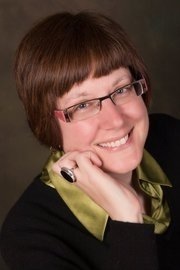 A very happy Pat Zietlow Miller!
A very happy Pat Zietlow Miller!
Five years.
That’s how long it took for my debut picture book, Sophie's Squash , to move from a first draft to a published book. Out soon!
Out soon!
For some writers, that’s nothing. They’ve been working and waiting much longer. For other writers, it seems like an eternity. “You had to wait how long?” they ask as light fades from their eyes. “How long?”
The truth is, no two writers have the same path to publication. And because writing is often a solitary venture full of second-guessing and self-doubt, I thought I’d pull back the curtain on the twists and turns of my path in hopes it might make you feel better about your journey.
It all started the year I turned 39. That’s when I realized that no one in New York was ever going to just call me and ask me to write a children’s book. If I wanted to be a children’s book author (which I have since I was in college) I was going to have to … you know … actually write a manuscript.
Once I realized this rather obvious fact, I started reading and writing. And attending Society of Children’s Book Writers and Illustrators conferences to learn all the things I didn’t know. Of which there were many.
I was working on several manuscripts at the same time. Some will never see the light of day, and rightly so. Others, I still have hope for. But out of all the reading and writing that was going on, here’s the path of the manuscript that ended up becoming my first book.
It all started in 2008. I wrote the first draft of Sophie's Squash – the story of a little girl who is unusually attached to a butternut squash. I felt optimistic. I submitted. I got form rejections. Then, I received a little blue card saying, “Cute, but not for us.” I rejoiced prematurely and brought the card/manuscript to Whispering Woods Picture Book Retreat where I got advice from Jill Esbaum and Linda Skeers. Then, I rewrote massively and repeatedly, submitted further and got … more rejections.
In 2009, an editor asked for revision, saying, “Ramp up the sadness.” I rewrote again. Then, the editor left. I submitted elsewhere and got … more rejections. Another editor also asked for revisions shortly thereafter, but her peers thought the story was “too death focused.” See, even editors don’t agree.
In 2010, I got a letter from yet another editor. She liked it, but thought it was too sad. She asked me to make the story happier and resubmit. I revised massively and repeatedly. She shared it with her peers, and the verdict was the dreaded, “Too quiet.” (I started feeling discouraged right about here.)
2011 dawned with few prospects. I submitted elsewhere -- including Schwartz & Wade on Jan. 4. (They’re one of my all-time favorite picture book publishers, and I would have submitted to them earlier, but I didn’t think they considered unagented work.) I stopped hoping at this point because I was almost out of options. Then, on Sept. 11, the phone rang and a voice, said: “This is Anne Schwartz. You probably don’t remember sending us Sophie’s Squash … ”
Oh, I remembered.
After that, it was two years of line edits, illustrations, and seeing a beautiful book come together that will be released in just a few days.
So was the wait worth it? Yeah. Not just because it had a happy ending. But because it made me a much better writer. I think Sophie's Squash probably got revised 10 times during those four years, and I learned and grew each time.
The whole journey taught me that downs, while disappointing, often are replaced by something even better. This knowledge helps me put things in perspective to this day – and should help me handle whatever happens during the next five years of my publishing journey.
Pat, thank you for sharing your story. And thank you for keeping the faith all those years. You are role model for being professional as well as staying true to your own voice and heart. I wish you all the best!
If you live in the Madison, Wisconsin area, you are invited to Pat's book launch at 1 p.m. on August 17, at the Barnes and Noble (7433 Mineral Point Road, Madison, WI)
 A very happy Pat Zietlow Miller!
A very happy Pat Zietlow Miller!Five years.
That’s how long it took for my debut picture book, Sophie's Squash , to move from a first draft to a published book.
 Out soon!
Out soon!For some writers, that’s nothing. They’ve been working and waiting much longer. For other writers, it seems like an eternity. “You had to wait how long?” they ask as light fades from their eyes. “How long?”
The truth is, no two writers have the same path to publication. And because writing is often a solitary venture full of second-guessing and self-doubt, I thought I’d pull back the curtain on the twists and turns of my path in hopes it might make you feel better about your journey.
It all started the year I turned 39. That’s when I realized that no one in New York was ever going to just call me and ask me to write a children’s book. If I wanted to be a children’s book author (which I have since I was in college) I was going to have to … you know … actually write a manuscript.
Once I realized this rather obvious fact, I started reading and writing. And attending Society of Children’s Book Writers and Illustrators conferences to learn all the things I didn’t know. Of which there were many.
I was working on several manuscripts at the same time. Some will never see the light of day, and rightly so. Others, I still have hope for. But out of all the reading and writing that was going on, here’s the path of the manuscript that ended up becoming my first book.
It all started in 2008. I wrote the first draft of Sophie's Squash – the story of a little girl who is unusually attached to a butternut squash. I felt optimistic. I submitted. I got form rejections. Then, I received a little blue card saying, “Cute, but not for us.” I rejoiced prematurely and brought the card/manuscript to Whispering Woods Picture Book Retreat where I got advice from Jill Esbaum and Linda Skeers. Then, I rewrote massively and repeatedly, submitted further and got … more rejections.
In 2009, an editor asked for revision, saying, “Ramp up the sadness.” I rewrote again. Then, the editor left. I submitted elsewhere and got … more rejections. Another editor also asked for revisions shortly thereafter, but her peers thought the story was “too death focused.” See, even editors don’t agree.
In 2010, I got a letter from yet another editor. She liked it, but thought it was too sad. She asked me to make the story happier and resubmit. I revised massively and repeatedly. She shared it with her peers, and the verdict was the dreaded, “Too quiet.” (I started feeling discouraged right about here.)
2011 dawned with few prospects. I submitted elsewhere -- including Schwartz & Wade on Jan. 4. (They’re one of my all-time favorite picture book publishers, and I would have submitted to them earlier, but I didn’t think they considered unagented work.) I stopped hoping at this point because I was almost out of options. Then, on Sept. 11, the phone rang and a voice, said: “This is Anne Schwartz. You probably don’t remember sending us Sophie’s Squash … ”
Oh, I remembered.
After that, it was two years of line edits, illustrations, and seeing a beautiful book come together that will be released in just a few days.
So was the wait worth it? Yeah. Not just because it had a happy ending. But because it made me a much better writer. I think Sophie's Squash probably got revised 10 times during those four years, and I learned and grew each time.
The whole journey taught me that downs, while disappointing, often are replaced by something even better. This knowledge helps me put things in perspective to this day – and should help me handle whatever happens during the next five years of my publishing journey.
Pat, thank you for sharing your story. And thank you for keeping the faith all those years. You are role model for being professional as well as staying true to your own voice and heart. I wish you all the best!
If you live in the Madison, Wisconsin area, you are invited to Pat's book launch at 1 p.m. on August 17, at the Barnes and Noble (7433 Mineral Point Road, Madison, WI)
Published on August 02, 2013 06:30
August 1, 2013
Thursday's Thought
If we don't try, we don't do. And if we don't do, why are we here on this earth?
James Stewart
James Stewart
Published on August 01, 2013 06:30
July 26, 2013
Friend Friday
I am so delighted to turn the blog over today to a very new friend, Laura Golden, with whom I share an editor at Delacorte. Not only have I had the chance to meet Laura, but I got the added bonus of meeting her wonderful husband and two sons when they recently visited Washington state.
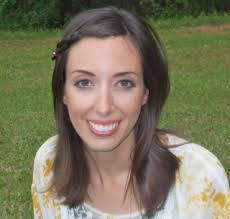
Beautiful Flaws by Laura Golden
“Sometimes it's just not easy to like Lizzie Hawkins. Sometimes you can't help but admire her determination.”
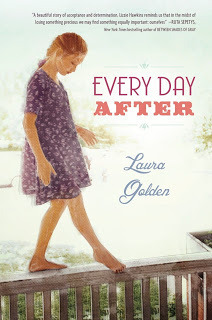
The above quote is the entirety of Karen Arendt’s four-star review of Every Day After on Goodreads. It is one of my favorites. Quite to the point, don’t you think? Aside from that, I love it because it’s true.
This is my Nana, Nelda Posey Perry, at about ten or eleven years old.
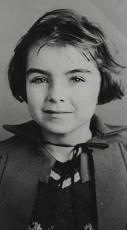
Nana served as inspiration for the character of Lizzie Hawkins. Like Lizzie, Nana was flawed. She laughed too loudly in public places and whispered too loudly during church service. (I wouldn’t sit next to her lest the pastor give us “the look”.) She was outspoken. (She dared to call the pastor who married my husband and me a not-so-nice word.) And she had a temper. (My sister and I got into trouble more than once for sitting on her pristine bedspread.)
This is my Jake, Curtis Aldridge Perry, at about nineteen years old.
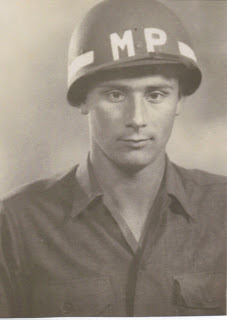
Jake served as inspiration for the character of Ben Butler, Lizzie’s best friend. Jake, too, was flawed. Unlike Nana, he was often too quiet. He rarely spoke what was on his mind. He was trusting to a fault, and he was a bit of a procrastinator.
But despite their shortcomings, all who knew Nana and Jake sincerely loved them. They were genuine. They were caring. They were smart. They were strong—both in body and in spirit. They are gone now, and they are deeply missed—flaws and all. A day doesn’t pass without me wishing I could hear Nana speak her mind or witness Jake keeping the peace just once more.
When I decided to write Every Day After, I wanted to develop characters that not only reflected my grandparents’ strengths, but also their weaknesses. I wanted to tell a story of kids overcoming unimaginable hardships during the Great Depression—just as Nana and Jake had done. I wanted to tell a story of kids overcoming those hardships in spite of their flaws, and in the end, overcoming their flaws in spite of their hardships. The final result is a main character that can grate on your nerves, but I didn’t want to make Lizzie perfect and likable from the outset. I wanted her to struggle to overcome her shortcomings and experience emotional growth just as we all (hopefully) do.
Real-life stories are those of day-to-day struggles to overcome weaknesses—weaknesses that we display even as adults. How could I expect eleven- or twelve-year-olds, real or fictional, to consistently choose the high road and make it through tough trials mistake-free? I couldn’t. That simply isn’t reality. So, yes, most of the characters in Every Day After mess up, say the wrong thing, or act out of line. But so did my grandparents. And so do I. Far more often than I would care to admit.
Nobody is perfect. The beauty in our imperfections is our calling to recognize them and change. If we only loved flawless folks, we’d never love anybody—not even ourselves.
Without flaws there could be no growth or change. There could be no redemption or unconditional love. Imperfections add depth and meaning to our everyday lives. They do the same in fictional lives as well. Give flawed characters a chance. Forgive them their flaws just as you must forgive others on a daily basis. There is immeasurable beauty in flaws and the transformation they ignite.
Laura, thank you for creating characters who mess up and still pick themselves back up again. That allows us to love them all the more! I can't wait to read your next novel -- so hurry up and finish it.
Readers: You can learn more about Laura at her blog, or follow her on Twitter: @laurapgolden

Beautiful Flaws by Laura Golden
“Sometimes it's just not easy to like Lizzie Hawkins. Sometimes you can't help but admire her determination.”

The above quote is the entirety of Karen Arendt’s four-star review of Every Day After on Goodreads. It is one of my favorites. Quite to the point, don’t you think? Aside from that, I love it because it’s true.
This is my Nana, Nelda Posey Perry, at about ten or eleven years old.

Nana served as inspiration for the character of Lizzie Hawkins. Like Lizzie, Nana was flawed. She laughed too loudly in public places and whispered too loudly during church service. (I wouldn’t sit next to her lest the pastor give us “the look”.) She was outspoken. (She dared to call the pastor who married my husband and me a not-so-nice word.) And she had a temper. (My sister and I got into trouble more than once for sitting on her pristine bedspread.)
This is my Jake, Curtis Aldridge Perry, at about nineteen years old.

Jake served as inspiration for the character of Ben Butler, Lizzie’s best friend. Jake, too, was flawed. Unlike Nana, he was often too quiet. He rarely spoke what was on his mind. He was trusting to a fault, and he was a bit of a procrastinator.
But despite their shortcomings, all who knew Nana and Jake sincerely loved them. They were genuine. They were caring. They were smart. They were strong—both in body and in spirit. They are gone now, and they are deeply missed—flaws and all. A day doesn’t pass without me wishing I could hear Nana speak her mind or witness Jake keeping the peace just once more.
When I decided to write Every Day After, I wanted to develop characters that not only reflected my grandparents’ strengths, but also their weaknesses. I wanted to tell a story of kids overcoming unimaginable hardships during the Great Depression—just as Nana and Jake had done. I wanted to tell a story of kids overcoming those hardships in spite of their flaws, and in the end, overcoming their flaws in spite of their hardships. The final result is a main character that can grate on your nerves, but I didn’t want to make Lizzie perfect and likable from the outset. I wanted her to struggle to overcome her shortcomings and experience emotional growth just as we all (hopefully) do.
Real-life stories are those of day-to-day struggles to overcome weaknesses—weaknesses that we display even as adults. How could I expect eleven- or twelve-year-olds, real or fictional, to consistently choose the high road and make it through tough trials mistake-free? I couldn’t. That simply isn’t reality. So, yes, most of the characters in Every Day After mess up, say the wrong thing, or act out of line. But so did my grandparents. And so do I. Far more often than I would care to admit.
Nobody is perfect. The beauty in our imperfections is our calling to recognize them and change. If we only loved flawless folks, we’d never love anybody—not even ourselves.
Without flaws there could be no growth or change. There could be no redemption or unconditional love. Imperfections add depth and meaning to our everyday lives. They do the same in fictional lives as well. Give flawed characters a chance. Forgive them their flaws just as you must forgive others on a daily basis. There is immeasurable beauty in flaws and the transformation they ignite.
Laura, thank you for creating characters who mess up and still pick themselves back up again. That allows us to love them all the more! I can't wait to read your next novel -- so hurry up and finish it.
Readers: You can learn more about Laura at her blog, or follow her on Twitter: @laurapgolden
Published on July 26, 2013 06:30
July 25, 2013
Thursday's Thought
The door that nobody else seems to go in atseems always to swing open widely for me.
Clara Barton
Clara Barton
Published on July 25, 2013 06:30
July 19, 2013
Friend Friday
Please welcome the elegant and thoughtful Dia Calhoun, today's guest blogger.
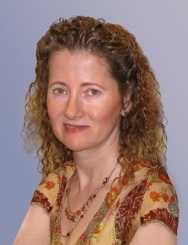
The Magical Fusion of Place and Imagination
As a beginning author devouring books about the writing craft, whenever I reached the inevitable lesson to “write what you know,” I tuned out. After all, I wanted to write fantasy novels. So how could I “know” unicorns, dragons, or girls who travelled the galaxy on tesseracts? I wanted to write whatever I could imagine—a much bigger realm than what I knew.
Here’s the irony. A specific place—my father-in-law’s orchard in Eastern Washington (the Farm) inspired my first and third fantasy novels. The Farm also inspired my recent contemporary verse novels, After the River, the Sun and Eva of the Farm.
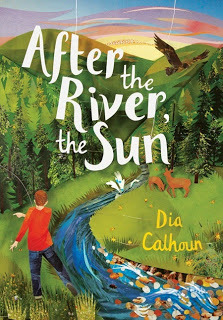 Dia's latest book, just out
Dia's latest book, just out
I‘ve spent twenty-five years coming to know the farm in all its seasons. In the fall, walking through the orchard, I’ll whisper to the reddening apples, “I knew you when you were blossoms.” I’ve seen fire on the mountain and felt fear that the farm would burn. I’ve seen the wild canyon behind the farm change from drought, flood, and storm.
In all of my novels inspired by the Farm, my intimate knowledge of the place fused with my imagination to create new story possibilities. This happened even more powerfully in my contemporary novels than in my fantasy novels. Why? My imagination could use all the specific details without filtering to run wild.
Here’s an example. In the canyon, a dead tree snag looms high on a foothill, silhouetted against the sky.

The snag has a pointy, blackened top. It spooked me for years, seeming somehow demonic (surprise— I have a vivid imagination). One day, walking through the canyon, I glanced up at the snag. Something about how the light fell, or something inside me that was tired of being spooked, changed what I saw. Suddenly the pointy top looked like a wizard’s hat, the snag like a wizard in a robe. I shouted up, “I name you the Good Wizard who watches over the canyon.” Now when I walk up the canyon, I greet Good Wizard joyfully.
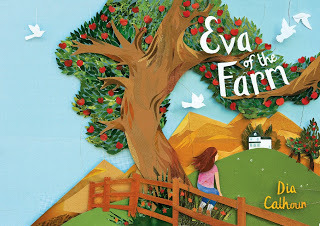
I used this incident in Eva of the Farm—Eva uses the Greater Power of Imagination to transform the Demon Snag into Good Wizard.
In After the River, The Sun, a companion novel, Good Wizard actually pointed the story in a new direction. Eckhart needed to find a way to atone for his parents’ death. But at that moment in the story’s development, neither Eckhart nor I knew how he’d do that. To find out, I sent Eckhart and Eva up the steep foothill on a pilgrimage to visit Good Wizard. And there, to my surprise, Good Wizard showed Eckhart what to do:
The wind rose,whistling through the stump,and it seemed as though Good Wizard himselfwere whistlingas he pondered Eckhart’s question.A pine tree swayed,and Eva’s hair blew in ribbonsaround her face.Good Wizard whistled louder.Eckhart blinked,for the wizard’s arm-like branchpointed straightto the topof Heaven’s Gate Mountain.
As the wind rose and rose,as the whistling piercedthe scars and the weariness in Eckhart’s heart,as he became light, so light,almost lifting from the ridge—Eckhart knewexactly what he had to doto atone.
He had to go higher.he had to goall the wayto the very topof Heaven’s Gate
Writing about what I know and love, the Farm, never limited me as a writer. Instead, specific details of place ignited my imagination—making that realm bigger and more magical than I could ever have imagined.
Thank you, Dia, for this reminder of how the concrete and specific give each story its unique voice!

The Magical Fusion of Place and Imagination
As a beginning author devouring books about the writing craft, whenever I reached the inevitable lesson to “write what you know,” I tuned out. After all, I wanted to write fantasy novels. So how could I “know” unicorns, dragons, or girls who travelled the galaxy on tesseracts? I wanted to write whatever I could imagine—a much bigger realm than what I knew.
Here’s the irony. A specific place—my father-in-law’s orchard in Eastern Washington (the Farm) inspired my first and third fantasy novels. The Farm also inspired my recent contemporary verse novels, After the River, the Sun and Eva of the Farm.
 Dia's latest book, just out
Dia's latest book, just outI‘ve spent twenty-five years coming to know the farm in all its seasons. In the fall, walking through the orchard, I’ll whisper to the reddening apples, “I knew you when you were blossoms.” I’ve seen fire on the mountain and felt fear that the farm would burn. I’ve seen the wild canyon behind the farm change from drought, flood, and storm.
In all of my novels inspired by the Farm, my intimate knowledge of the place fused with my imagination to create new story possibilities. This happened even more powerfully in my contemporary novels than in my fantasy novels. Why? My imagination could use all the specific details without filtering to run wild.
Here’s an example. In the canyon, a dead tree snag looms high on a foothill, silhouetted against the sky.

The snag has a pointy, blackened top. It spooked me for years, seeming somehow demonic (surprise— I have a vivid imagination). One day, walking through the canyon, I glanced up at the snag. Something about how the light fell, or something inside me that was tired of being spooked, changed what I saw. Suddenly the pointy top looked like a wizard’s hat, the snag like a wizard in a robe. I shouted up, “I name you the Good Wizard who watches over the canyon.” Now when I walk up the canyon, I greet Good Wizard joyfully.

I used this incident in Eva of the Farm—Eva uses the Greater Power of Imagination to transform the Demon Snag into Good Wizard.
In After the River, The Sun, a companion novel, Good Wizard actually pointed the story in a new direction. Eckhart needed to find a way to atone for his parents’ death. But at that moment in the story’s development, neither Eckhart nor I knew how he’d do that. To find out, I sent Eckhart and Eva up the steep foothill on a pilgrimage to visit Good Wizard. And there, to my surprise, Good Wizard showed Eckhart what to do:
The wind rose,whistling through the stump,and it seemed as though Good Wizard himselfwere whistlingas he pondered Eckhart’s question.A pine tree swayed,and Eva’s hair blew in ribbonsaround her face.Good Wizard whistled louder.Eckhart blinked,for the wizard’s arm-like branchpointed straightto the topof Heaven’s Gate Mountain.
As the wind rose and rose,as the whistling piercedthe scars and the weariness in Eckhart’s heart,as he became light, so light,almost lifting from the ridge—Eckhart knewexactly what he had to doto atone.
He had to go higher.he had to goall the wayto the very topof Heaven’s Gate
Writing about what I know and love, the Farm, never limited me as a writer. Instead, specific details of place ignited my imagination—making that realm bigger and more magical than I could ever have imagined.
Thank you, Dia, for this reminder of how the concrete and specific give each story its unique voice!
Published on July 19, 2013 06:30
July 18, 2013
Thursday's Thought
The important thing is that we cannot live on hope alone, but that life is not worth living without it.
Harvey Milk
Harvey Milk
Published on July 18, 2013 06:30
July 15, 2013
Monday Musings
Though I'm taking a break from blogging, I couldn't resist sharing this link to a nerdily awesome post by the amazing and thoughtful Donalyn Miller, aka The Book Whisperer.
I think about how much time and energy we adults put in to encouraging our kids in their sports, music, hobbies, etc., and I think Donalyn hits the nail on the head. Though she says it in her own eloquent way, she's basically encouraging us to be the Little League coaches of our kids' reading lives.
Go. Now. Read her post.
I think about how much time and energy we adults put in to encouraging our kids in their sports, music, hobbies, etc., and I think Donalyn hits the nail on the head. Though she says it in her own eloquent way, she's basically encouraging us to be the Little League coaches of our kids' reading lives.
Go. Now. Read her post.
Published on July 15, 2013 09:14
July 12, 2013
Friend Friday
I am delighted to turn my blog over today to the talented, big-hearted and completely self-deprecating, Dana Sullivan. Was it Leo Derocher who said "Nice guys finish last"? Well, he was dead wrong. Dana is one of the nicest and a first-place finisher in anybody's book.
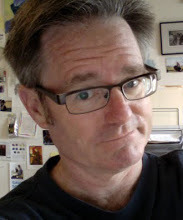
“What is your book about?” That one’s a stumper for me. At conferences and writing workshops we’ve all been told to compose an “elevator speech” about our work. Busy editors/publishers/agents/passersby don’t have time to listen to me stammer about it being “sort of based on my dog, but his ears were different, and it’s really me and how hard I take rejection and then you really should pay attention sometimes, but when you don’t things might still work out.” Even my eyes start glazing over and I’ve nodded off more than once when describing my book. And it’s a picture book! It takes less time to read than it takes me to describe.
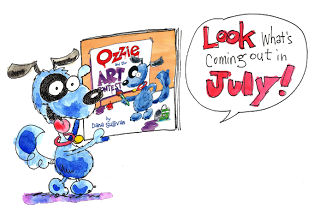
Part of me simply doesn’t want to put the “about” into words. I really worked to keep Ozzie light and free of any moral or redeeming qualities at all. I just wanted it to be fun and silly, not hit the reader over the head with the two by four of an adult lesson. Snore.

But sometimes the best perspectives come from complete strangers. Last week I received a review that gave me this perspective. Pamela Kramer at the Examiner.com wrote a wonderful reviewentitled “Ozzie and the Art Contest, a Book About Happiness.” “Happiness?” I thought, “Really?” I mean, I love the idea that I wrote a book about happiness, but I kind of thought it was more about overcoming adversity (but not in a boring ‘you can do it!’ kind of way, no siree).
The story really is based on my own experience in rejection. Who hasn’t worked hard on something, believing it the best ever, only to have our hopes crushed like a cute little ladybug under the unfeeling heel of an insensitive ignoramus? (okay, still a little bitter)

In Ozzie’s case, he’s worked very hard on his art contest entry and knows it will take first prize. But, Ozzie being Ozzie, is so confident in his artistic skills that he fails to read the specific instructions and undermines himself. He is absolutely miserable until his teacher, Miss Cattywhompus, reminds Ozzie that he loves making art – regardless of the reward – and that he really did pretty well, considering he didn’t follow the instructions at all. When Ozzie sees his mistake, he is even able to get a good laugh out of it.
In a book I was trying to be free of any moral lesson, Pamela Kramer found two: Read the instructions carefully and winning isn’t everything – just have fun. And, darn it, I’ve found another: while it’s good to keep your eye on the ultimate goal of your journey, there are usually some pretty good things to pay attention to along the way. Things like drawing because you LIKE to draw, writing because you LIKE to write and, for others, doing math because you LIKE to do math.
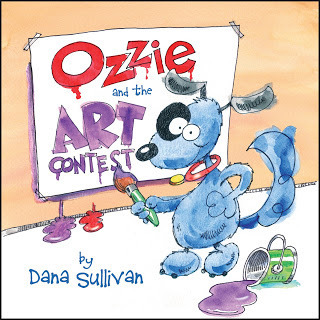
Okay, I like those lessons. Apparently lessons don’t require two by fours. Who knew?
Thank you, Dana for sharing today. I am going to remember those two lessons: who needs instructions, anyway?! Readers, please do follow these instructions: buy Dana’s debut picture book, Ozzie and the Art Contest, from your favorite indie bookstore! And be sure to check out his blog!

“What is your book about?” That one’s a stumper for me. At conferences and writing workshops we’ve all been told to compose an “elevator speech” about our work. Busy editors/publishers/agents/passersby don’t have time to listen to me stammer about it being “sort of based on my dog, but his ears were different, and it’s really me and how hard I take rejection and then you really should pay attention sometimes, but when you don’t things might still work out.” Even my eyes start glazing over and I’ve nodded off more than once when describing my book. And it’s a picture book! It takes less time to read than it takes me to describe.

Part of me simply doesn’t want to put the “about” into words. I really worked to keep Ozzie light and free of any moral or redeeming qualities at all. I just wanted it to be fun and silly, not hit the reader over the head with the two by four of an adult lesson. Snore.

But sometimes the best perspectives come from complete strangers. Last week I received a review that gave me this perspective. Pamela Kramer at the Examiner.com wrote a wonderful reviewentitled “Ozzie and the Art Contest, a Book About Happiness.” “Happiness?” I thought, “Really?” I mean, I love the idea that I wrote a book about happiness, but I kind of thought it was more about overcoming adversity (but not in a boring ‘you can do it!’ kind of way, no siree).
The story really is based on my own experience in rejection. Who hasn’t worked hard on something, believing it the best ever, only to have our hopes crushed like a cute little ladybug under the unfeeling heel of an insensitive ignoramus? (okay, still a little bitter)

In Ozzie’s case, he’s worked very hard on his art contest entry and knows it will take first prize. But, Ozzie being Ozzie, is so confident in his artistic skills that he fails to read the specific instructions and undermines himself. He is absolutely miserable until his teacher, Miss Cattywhompus, reminds Ozzie that he loves making art – regardless of the reward – and that he really did pretty well, considering he didn’t follow the instructions at all. When Ozzie sees his mistake, he is even able to get a good laugh out of it.
In a book I was trying to be free of any moral lesson, Pamela Kramer found two: Read the instructions carefully and winning isn’t everything – just have fun. And, darn it, I’ve found another: while it’s good to keep your eye on the ultimate goal of your journey, there are usually some pretty good things to pay attention to along the way. Things like drawing because you LIKE to draw, writing because you LIKE to write and, for others, doing math because you LIKE to do math.

Okay, I like those lessons. Apparently lessons don’t require two by fours. Who knew?
Thank you, Dana for sharing today. I am going to remember those two lessons: who needs instructions, anyway?! Readers, please do follow these instructions: buy Dana’s debut picture book, Ozzie and the Art Contest, from your favorite indie bookstore! And be sure to check out his blog!
Published on July 12, 2013 06:30



